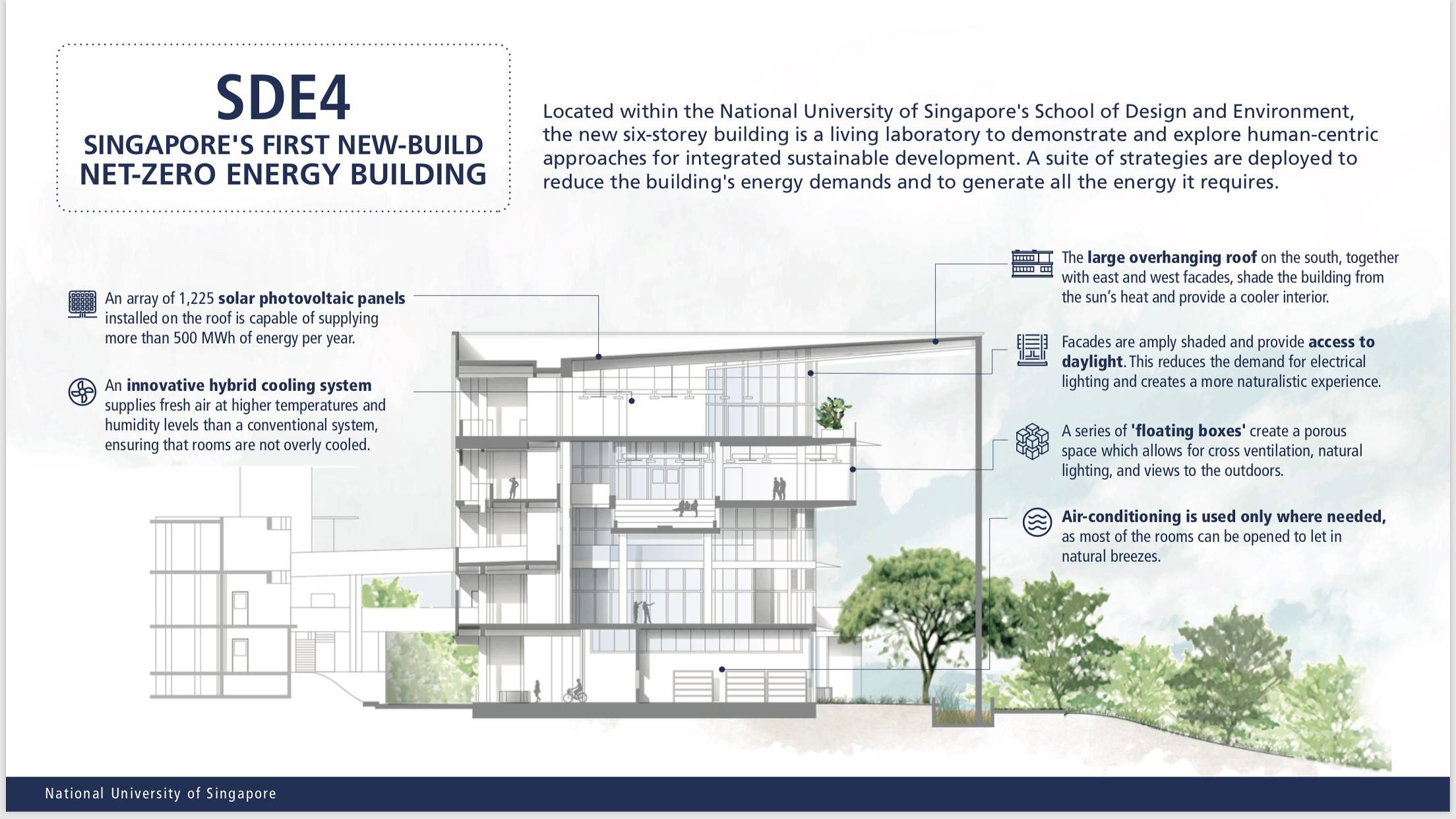SINGAPORE: The National University of Singapore (NUS) on Wednesday (Jan 30) unveiled a new building at the School of Design and Environment that has net-zero energy consumption.
This means the building consumes only as much energy as it produces on site, such as by harnessing solar energy. Named SDE4, it is said to be the first net-zero energy building in Singapore that was built from scratch.
The six-storey building features several sustainable designs such as solar roof installations, a hybrid cooling system and a large overhanging roof.
More than 1,200 solar panels have been installed on the roof of the building. (Photo: Alif Amsyar)
The 1,225 solar panels installed on the roof can supply more than 500 megawatt hours of energy per year. This can power up to 1,500 three-room flats for more than a month.
On days when there is insufficient sunlight, the building will draw energy from the university’s power grid, said NUS in a media release.

Summary of the features of SDE4, touted as Singapore’s first net-zero energy building that was built from scratch. (Image: National University of Singapore)
A large overhanging roof shades the building from the sun’s heat, and to manage energy consumption, a hybrid cooling system ensures that rooms will not be over-cooled.
A model of the net-zero energy consumption building at NUS.
“Rooms within the building are supplied with cool air at higher temperatures and humidity levels than a conventional air-conditioning system,” said NUS.
“Ceiling fans circulate the cool air to generate a comfort condition that is significantly better than overcooled spaces.”
Demand for electrical lighting is reduced as these shaded facades allow sunlight to flow into the building. (Photo: Alif Amsyar)
“SDE4 sets an example to the building industry for higher performance standards and the integration of renewable technologies,” said NUS president Tan Eng Chye. “Our students studying in the building will reap the benefits of the human-centric building design.”
Speaking at the opening of SDE4, Finance Minister Heng Swee Keat said such buildings play a part in climate change. The building sector accounts for one-quarter of Singapore’s carbon emissions, he noted.
Finance Minister Heng Swee Keat enjoying the lion dance spectacle at the SDE 4. (Photo: Alif Amsyar)
“We have made green buildings a priority to tackle climate change. Currently, about 36 per cent of our buildings are green. We plan to raise this to 80 per cent by 2030,” said Mr Heng, who is also chairman of the National Research Foundation.
He added that Singapore must continue to harness technologies and drive innovation to improve the living environment.
“Ultimately, our buildings must be more than just bricks and mortar,” Mr Heng said. “They must be human-centric and help to promote interactions among its occupants and connect them and improve wellness.”




